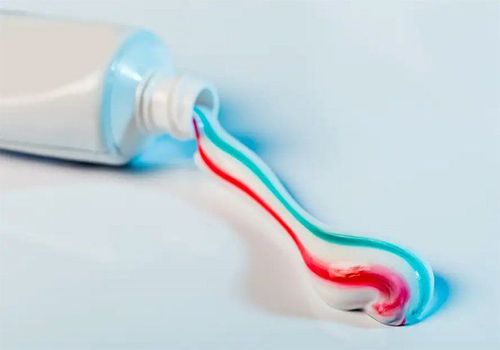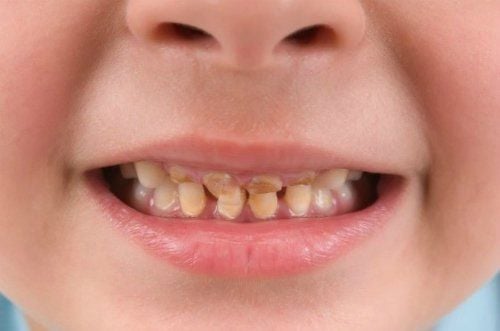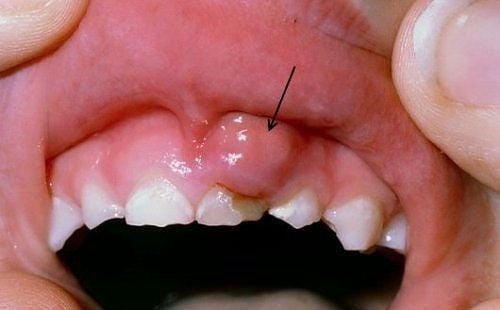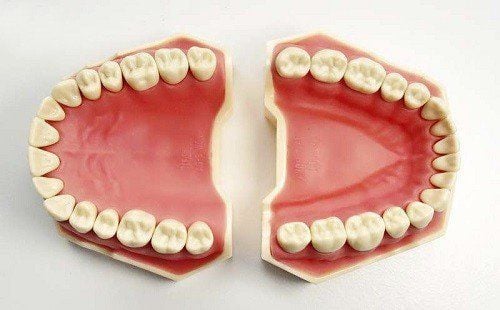This is an automatically translated article.
Sodium fluoride is a colorless crystalline solid or white powder that is soluble in liquids. Adding sodium fluoride in toothpaste or sodium fluoride in mouthwash has a role in preventing tooth decay. This is because fluoride has the ability to bind with calcium ions in the hydroxyapatite of the enamel surface, preventing enamel erosion by acids. This agent may also inhibit acid production by oral bacteria.
1. What is sodium fluoride?
In its free elemental form, fluoride is a trace mineral (like iodine) called fluorine. Fluoride can be found in both freshwater and seawater, in foods (eg, fish, tea) and in the bones of animals, including humans. In nature, this ingredient is found only in compounds, such as fluorite (calcium fluoride) ores in soil and rocks. To form Sodium fluoride, hydrogen fluoride (derived from fluorine) is neutralized by sodium hydroxide from brine and dried to a powder.
Sodium fluoride is one of the three main types of fluoride used in oral health products to help prevent tooth decay, alongside sodium monofluorophosphate and stannous fluoride.
Not only present in a certain concentration in tap water, Sodium fluoride in toothpaste or sodium fluoride in mouthwash will help strengthen the role of preventing tooth decay safely and effectively when formulated. Correct formula, use as directed. Fluoride molecules help prevent tooth decay and help remineralize tooth enamel, penetrating the enamel to rebuild eroded sites.
Therefore, in many countries, dentists often trust and recommend people to use toothpaste with added Sodium fluoride. This is the best, effective and easy way to do at home to support oral health, for adults and children alike, to have a strong enamel layer.
2. Instructions for using Sodium fluoride in oral care
Due to the different presence of Sodium fluoride in oral care products, the instructions for using Sodium fluoride are outlined as follows:
2.1 Using Sodium fluoride in mouthwash Using Sodium fluoride in mouthwash after brushing with toothpaste. Take the correct dose of mouthwash as prescribed. Hold it in your mouth for 30 seconds to a minute, then spit it out. Do not swallow. For 30 minutes after rinsing with Sodium fluoride, do not eat or drink anything. 2.2 Sodium fluoride in toothpaste Apply an adequate amount of toothpaste on a soft-bristled toothbrush and brush your teeth for at least one minute. Spit out after use and rinse mouth thoroughly with water. Do not swallow toothpaste during and after brushing. 2.3 Sodium fluoride tablets Oral: Swallow whole with water. Do not crush or chew the tablet. Chewable tablets: Chew the crushed tablet between your teeth before swallowing. Lozenges: Place the lozenge under the tongue and let the lozenge slowly dissolve. Products containing Sodium fluoride chewable tablets and lozenges should be taken at bedtime after brushing or as directed by a dentist. Do not drink or eat for 30 minutes after taking these products.
3. Contraindications to the use of Sodium fluoride
Do not use Sodium fluoride or products containing this ingredient if you have had an allergic reaction to fluoride.
Using too much fluoride can cause white patches or yellow or brown spots on teeth. Therefore, users should also not take this medication more often or in larger amounts than prescribed by their doctor.
Avoid drinking, eating or brushing teeth immediately after using Sodium fluoride in toothpaste or Sodium fluoride in mouthwash.
Do not use calcium pills or calcium-rich foods (such as milk, cheese or yogurt) within 2 hours before or 2 hours after using sodium fluoride in toothpaste or Sodium fluoride in mouthwash.
Inform the doctor if there are any kidney problems, joint pain, stomach ulcers and mouth problems, such as tooth discoloration, mouth sores and mucositis.
Sodium fluoride in toothpaste or Sodium fluoride in mouthwash should only be used by children on the advice of a doctor.
4. Possible side effects when taking sodium fluoride
4.1 Serious Side Effects Stools that are black, tarry, or bloody or bloody vomit. Bone pain or soreness. Sores on the mouth or lips. Skin rash. 4.2 Less serious side effects Stomach cramps, nausea or vomiting. Acne-like skin changes. In summary, Sodium fluoride exists as a white powder that easily dissolves in water and is considered a basic oral care ingredient. When using Sodium fluoride in toothpaste or Sodium fluoride in mouthwash, the enameled tooth enamel positions due to acid will quickly be filled. However, because of the risk of poisoning, sodium fluoride should be used as recommended by a doctor or dentist; at the same time combined with good oral care habits to contribute to ensuring healthy teeth, preventing tooth decay.
Please dial HOTLINE for more information or register for an appointment HERE. Download MyVinmec app to make appointments faster and to manage your bookings easily.













